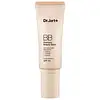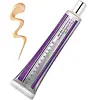What's inside
What's inside
 Key Ingredients
Key Ingredients

 Benefits
Benefits

 Concerns
Concerns

 Ingredients Side-by-side
Ingredients Side-by-side

Water
Skin ConditioningCyclopentasiloxane
EmollientCyclohexasiloxane
EmollientGlycerin
HumectantPEG-10 Dimethicone
Skin ConditioningTalc
AbrasiveHexyl Laurate
EmollientDipropylene Glycol
HumectantC12-15 Alkyl Benzoate
AntimicrobialNiacinamide
SmoothingDiphenylsiloxy Phenyl Trimethicone
Skin ConditioningDisteardimonium Hectorite
StabilisingCitrus Aurantium Bergamia Fruit Oil
MaskingCitrus Limon Peel Oil
MaskingCitrus Aurantifolia Oil
CleansingPinus Sylvestris Leaf Oil
MaskingCitrus Aurantium Dulcis Peel Oil
MaskingAdenosine
Skin ConditioningAllantoin
Skin ConditioningEthylhexylglycerin
Skin ConditioningTrihydroxystearin
Skin ConditioningPolyglyceryl-6 Polyricinoleate
EmulsifyingMethicone
EmollientDimethicone
EmollientDimethicone/Vinyl Dimethicone Crosspolymer
Skin Conditioning1,2-Hexanediol
Skin ConditioningTriethoxycaprylylsilane
Magnesium Sulfate
Eucalyptus Globulus Leaf Oil
PerfumingLimonene
PerfumingTocopherol
AntioxidantBHT
AntioxidantPhenoxyethanol
PreservativeCI 77891
Cosmetic ColorantCI 77492
Cosmetic ColorantCI 77491
Cosmetic ColorantIron Oxides
Water, Cyclopentasiloxane, Cyclohexasiloxane, Glycerin, PEG-10 Dimethicone, Talc, Hexyl Laurate, Dipropylene Glycol, C12-15 Alkyl Benzoate, Niacinamide, Diphenylsiloxy Phenyl Trimethicone, Disteardimonium Hectorite, Citrus Aurantium Bergamia Fruit Oil, Citrus Limon Peel Oil, Citrus Aurantifolia Oil, Pinus Sylvestris Leaf Oil, Citrus Aurantium Dulcis Peel Oil, Adenosine, Allantoin, Ethylhexylglycerin, Trihydroxystearin, Polyglyceryl-6 Polyricinoleate, Methicone, Dimethicone, Dimethicone/Vinyl Dimethicone Crosspolymer, 1,2-Hexanediol, Triethoxycaprylylsilane, Magnesium Sulfate, Eucalyptus Globulus Leaf Oil, Limonene, Tocopherol, BHT, Phenoxyethanol, CI 77891, CI 77492, CI 77491, Iron Oxides
Water
Skin ConditioningCyclopentasiloxane
EmollientButylene Glycol
HumectantNeopentyl Glycol Diethylhexanoate
EmollientTalc
AbrasiveGlycerin
HumectantPEG-10 Dimethicone
Skin ConditioningDimethicone
EmollientPhenyl Trimethicone
Skin ConditioningPentylene Glycol
Skin ConditioningPEG-150
HumectantMagnesium Sulfate
Aluminum Hydroxide
EmollientStearic Acid
CleansingSilica Dimethyl Silylate
EmollientDimethicone/Vinyl Dimethicone Crosspolymer
Skin ConditioningMica
Cosmetic ColorantPhenoxyethanol
PreservativeTrimethylsiloxysilicate
EmollientDextrin Palmitate
EmulsifyingTocopherol
AntioxidantAlcohol
AntimicrobialRosa Damascena Flower Water
MaskingLeontopodium Alpinum Flower/Leaf Extract
Skin ConditioningThymus Vulgaris Flower/Leaf Extract
MaskingBuddleja Davidii Extract
Skin ConditioningCamellia Sinensis Leaf Extract
AntimicrobialChondrus Elatus/Saccharina Angustata/Monostroma Nitidum Thallus Extract
Skin ConditioningLonicera Japonica Flower Extract
Skin ConditioningGlycine Soja Protein
EmulsifyingSodium Dextran Sulfate
Gel FormingSuperoxide Dismutase
AntioxidantSodium Benzoate
MaskingEthylhexylglycerin
Skin ConditioningPotassium Sorbate
PreservativeCI 77891
Cosmetic ColorantIron Oxides
Water, Cyclopentasiloxane, Butylene Glycol, Neopentyl Glycol Diethylhexanoate, Talc, Glycerin, PEG-10 Dimethicone, Dimethicone, Phenyl Trimethicone, Pentylene Glycol, PEG-150, Magnesium Sulfate, Aluminum Hydroxide, Stearic Acid, Silica Dimethyl Silylate, Dimethicone/Vinyl Dimethicone Crosspolymer, Mica, Phenoxyethanol, Trimethylsiloxysilicate, Dextrin Palmitate, Tocopherol, Alcohol, Rosa Damascena Flower Water, Leontopodium Alpinum Flower/Leaf Extract, Thymus Vulgaris Flower/Leaf Extract, Buddleja Davidii Extract, Camellia Sinensis Leaf Extract, Chondrus Elatus/Saccharina Angustata/Monostroma Nitidum Thallus Extract, Lonicera Japonica Flower Extract, Glycine Soja Protein, Sodium Dextran Sulfate, Superoxide Dismutase, Sodium Benzoate, Ethylhexylglycerin, Potassium Sorbate, CI 77891, Iron Oxides
 Reviews
Reviews

Ingredients Explained
These ingredients are found in both products.
Ingredients higher up in an ingredient list are typically present in a larger amount.
Ci 77891 is a white pigment from Titanium dioxide. It is naturally found in minerals such as rutile and ilmenite.
It's main function is to add a white color to cosmetics. It can also be mixed with other colors to create different shades.
Ci 77891 is commonly found in sunscreens due to its ability to block UV rays.
Learn more about CI 77891Cyclopentasiloxane, or D5, is a silicone used to improve texture of products and trap moisture.
D5 is considered lightweight and volatile. Volatile means it evaporates quickly after application. Once evaporated, D5 leaves a thin barrier that helps keep skin hydrated.
It is also an emollient. Emollients help soften the skin and prevent water loss. Silicones create a silky texture in products. D5 helps other ingredients become more spreadable.
Studies show D5 is safe to use in skincare products. We recommend speaking with a skincare professional if you have concerns.
Learn more about CyclopentasiloxaneDimethicone is a type of synthetic silicone created from natural materials such as quartz.
What it does:
Dimethicone comes in different viscosities:
Depending on the viscosity, dimethicone has different properties.
Ingredients lists don't always show which type is used, so we recommend reaching out to the brand if you have questions about the viscosity.
This ingredient is unlikely to cause irritation because it does not get absorbed into skin. However, people with silicone allergies should be careful about using this ingredient.
Note: Dimethicone may contribute to pilling. This is because it is not oil or water soluble, so pilling may occur when layered with products. When mixed with heavy oils in a formula, the outcome is also quite greasy.
Learn more about DimethiconeThis ingredient is a silicone used to improve the texture of products and absorb oil. It does not get absorbed into the skin.
Like other silicones, Dimethicone/Vinyl Dimethicone Crosspolymer helps condition the skin by creating a barrier. In this sense, it can act as an emollient and trap moisture in.
This ingredient is a type of elastomer.
Learn more about Dimethicone/Vinyl Dimethicone CrosspolymerEthylhexylglycerin (we can't pronounce this either) is commonly used as a preservative and skin softener. It is derived from glyceryl.
You might see Ethylhexylglycerin often paired with other preservatives such as phenoxyethanol. Ethylhexylglycerin has been found to increase the effectiveness of these other preservatives.
Glycerin is already naturally found in your skin. It helps moisturize and protect your skin.
A study from 2016 found glycerin to be more effective as a humectant than AHAs and hyaluronic acid.
As a humectant, it helps the skin stay hydrated by pulling moisture to your skin. The low molecular weight of glycerin allows it to pull moisture into the deeper layers of your skin.
Hydrated skin improves your skin barrier; Your skin barrier helps protect against irritants and bacteria.
Glycerin has also been found to have antimicrobial and antiviral properties. Due to these properties, glycerin is often used in wound and burn treatments.
In cosmetics, glycerin is usually derived from plants such as soybean or palm. However, it can also be sourced from animals, such as tallow or animal fat.
This ingredient is organic, colorless, odorless, and non-toxic.
Glycerin is the name for this ingredient in American English. British English uses Glycerol/Glycerine.
Learn more about GlycerinMagnesium Sulfate is a salt. More specifically, it is an epsom salt, or the bath salt used to help relieve muscle aches.
Despite having ‘sulfate’ in the name, it isn’t a surfactant or cleansing agent like sodium lauryl sulfate. Unlike those sulfates, magnesium sulfate doesn’t have the same cleansing or foaming properties (it's simply a type of salt).
In cosmetics, Magnesium Sulfate is used to thicken a product or help dilute other solids. It is a non-reactive and non-irritating ingredient.
One study shows magnesium deficiency may lead to inflammation of the skin. Applying magnesium topically may help reduce inflammation.
You can find this ingredient in sea water or mineral deposits.
Learn more about Magnesium SulfatePeg-10 Dimethicone is silicone with conditioner and emulsifier properties. It mostly acts as an emollient in skincare and and humectant in haircare.
According to the manufacturer, acidic formulations decrease the stability of this ingredient. It works best in neutral or near neutral formulations.
Phenoxyethanol is a preservative that has germicide, antimicrobial, and aromatic properties. Studies show that phenoxyethanol can prevent microbial growth. By itself, it has a scent that is similar to that of a rose.
It's often used in formulations along with Caprylyl Glycol to preserve the shelf life of products.
Talc is a clay mineral. It helps absorb moisture and improve the texture of products. Like other types of clay, Talc can have a slight exfoliating effect on skin. Talc can be added to increase the volume of products.
Some Baby powders are made by combining talc with corn starch. The word "talc" comes from Latin and originates from Arabic. Talc is a mineral commonly found throughout the world.
If you have any concerns about using talc, we recommend checking out the FDA's official page.
Learn more about TalcTocopherol (also known as Vitamin E) is a common antioxidant used to help protect the skin from free-radicals and strengthen the skin barrier. It's also fat soluble - this means our skin is great at absorbing it.
Vitamin E also helps keep your natural skin lipids healthy. Your lipid skin barrier naturally consists of lipids, ceramides, and fatty acids. Vitamin E offers extra protection for your skin’s lipid barrier, keeping your skin healthy and nourished.
Another benefit is a bit of UV protection. Vitamin E helps reduce the damage caused by UVB rays. (It should not replace your sunscreen). Combining it with Vitamin C can decrease sunburned cells and hyperpigmentation after UV exposure.
You might have noticed Vitamin E + C often paired together. This is because it is great at stabilizing Vitamin C. Using the two together helps increase the effectiveness of both ingredients.
There are often claims that Vitamin E can reduce/prevent scarring, but these claims haven't been confirmed by scientific research.
Learn more about TocopherolWater. It's the most common cosmetic ingredient of all. You'll usually see it at the top of ingredient lists, meaning that it makes up the largest part of the product.
So why is it so popular? Water most often acts as a solvent - this means that it helps dissolve other ingredients into the formulation.
You'll also recognize water as that liquid we all need to stay alive. If you see this, drink a glass of water. Stay hydrated!
Learn more about WaterThis ingredient is a combination of red, black, and yellow iron oxide pigments. This combination of colors is usually found in foundation, because it results in a "skin" color.